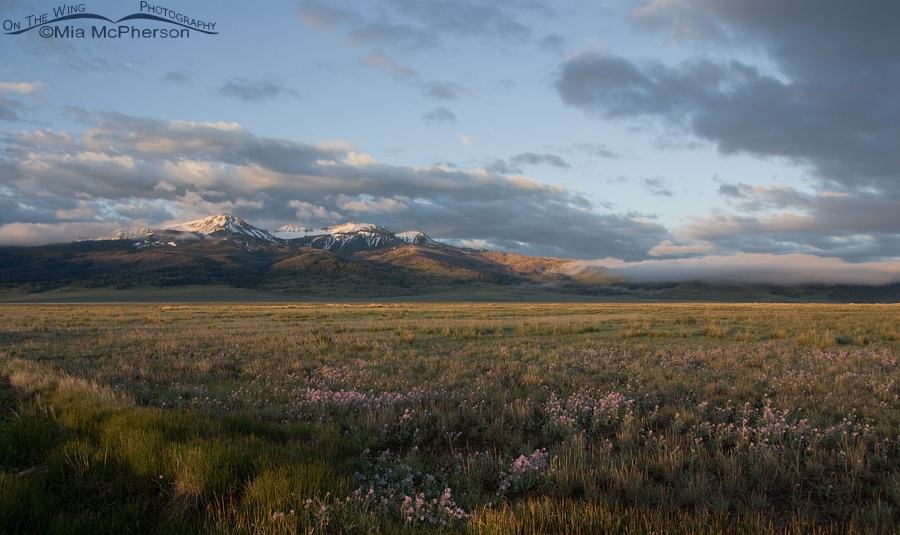 Centennial Mountain View from Red Rock Lakes National Wildlife Refuge, Montana
Centennial Mountain View from Red Rock Lakes National Wildlife Refuge, Montana
As a bird and nature photographer I often visit National Wildlife Refuges and soak up the natural beauty found within them when I am photographing birds, scenery and wildlife. National Wildlife Refuges can be found in all 50 states and the territories of American Samoa, Guam, Puerto Rico, Virgin Islands, and the U.S. Minor Outlying Islands. As of December 3, 2013 there are 562 National Wildlife refuges and 38 Wetlands Management Districts.
What is the Mission of our National Wildlife Refuges?
Mission Statement
The Mission of the National Wildlife Refuge System is to administer a national network of lands and waters for the conservation, management, and where appropriate, restoration of the fish, wildlife, and plant resources and their habitats within the United States for the benefit of present and future generations of Americans.
This land is absolutely priceless and the habitat within them is needed to protect our nation’s wildlife today and for future generations of animals, plants and people .
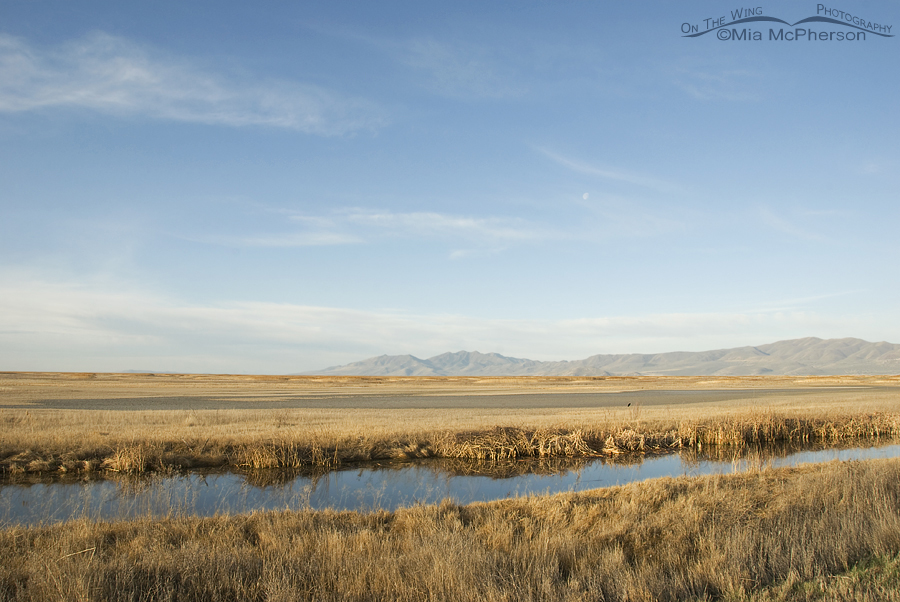 Bear River National Wildlife Refuge, Utah
Bear River National Wildlife Refuge, Utah
National Wildlife Refuges are home to birds, mammals, fish and plants some of which are at risk or endangered by habitat destruction and by pollution outside of the refuge boundaries. Some National Wildlife Refuges have had a part in saving endangered species, for instance in 1932 there were fewer than 70 Trumpeter Swans in the U.S. and half of those were found at Red Rock Lakes in the Centennial Valley of Montana. In 1935 Red Rock Lakes National Wildlife Refuge was established, the swans were protected and today the estimated population of Trumpeter Swans is 46,225. That is quite a comeback!
But now there is another danger to these natural treasures. That danger is oil and gas exploration and the possibility of fracking within our National Wildlife Refuges. We have to say no to fracking by raising our voices and telling our elected officials and those responsible for the preservation of our refuges that there is No Fracking Way we want these refuges or the wildlife within them to suffer the consequences of fracking.
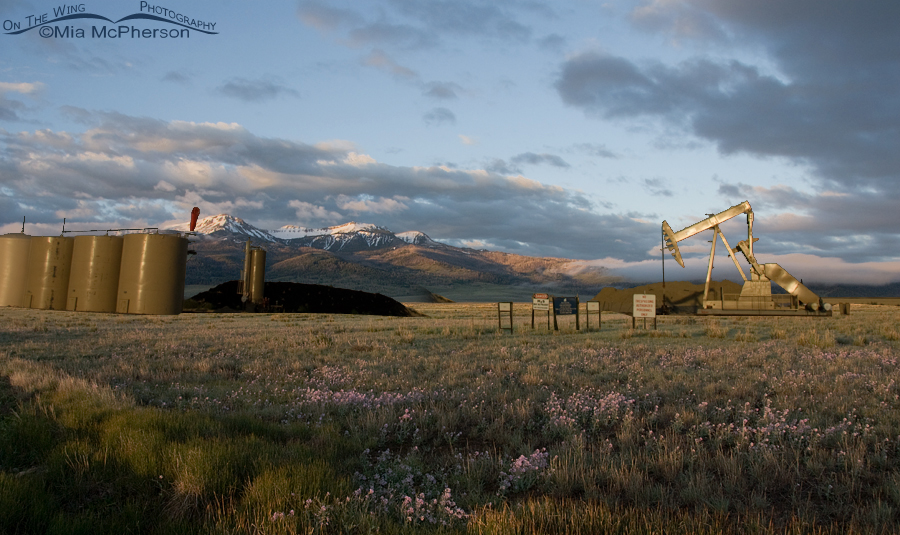 This is not a view we want to see of Red Rock Lakes National Wildlife Refuge, Montana
This is not a view we want to see of Red Rock Lakes National Wildlife Refuge, Montana
Oil and gas companies want to come in our National Wildlife Refuges to explore for oil and natural gas, they want to exploit; not preserve and protect, the resources found within the boundaries of our National Wildlife System. They want to tear up the land for new roads and other construction possibly putting endangered species at further risk. With the oil and gas industry comes noise, light pollution, the possibility of toxic chemical spills, waste, air pollutants, and water pollutants.
I combined two photos above, one of Red Rock Lakes National Wildlife Refuge taken near the Lower Lake looking out over the Centennial Valley towards the Centennial Mountains and one that I had taken of a fracking operation in northwestern Montana to show you and other people what it could look like if fracking is allowed in our National Wildlife Refuges. Those flowers and green grass could not survive fracking. And the animals that call the meadow home? They would die or have to move.
This is NOT what I want to see when I go to visit a National Wildlife Refuge. It is not want I want to hear or smell either.
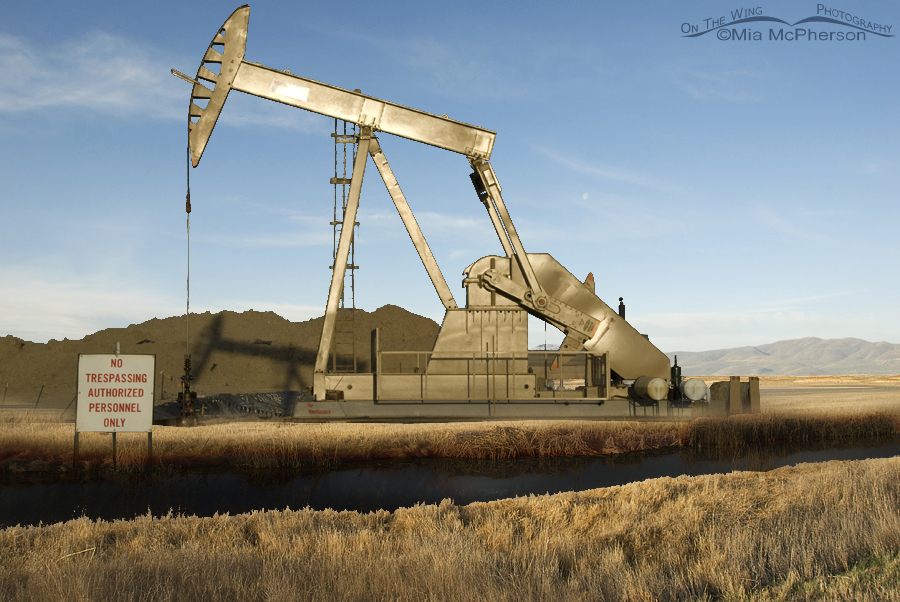 Don’t allow this to happen to Bear River National Wildlife Refuge, Utah
Don’t allow this to happen to Bear River National Wildlife Refuge, Utah
This is what Bear River National Wildlife Refuge could look like if fracking is allowed within its boundaries. The surface water there would become polluted and the earth would be injected with dangerous chemicals polluting the ground water which in turn could seriously affect every bird or animal that lives or breeds within the refuge.
The oil companies can not protect the environment, their safety policies are inadequate and their proven track records for spills, pollution and explosions are simply beyond pathetic. Think Exxon Valdez, think Deepwater Horizon, think of the smaller oil disasters that have killed millions of fish, sea life, mammals and birds and left habit destroyed for our lifetimes and those of our grandchildren and their grandchildren too. Think of those dangerous chemicals injected deep within the earth fracturing the very ground we stand on. The polluted aquifers.
We don’t want fracking or oil wells in our National Wildlife Refuges. Please let Mr. Scott Covington, Refuge Energy Program Coordinator of the US Fish and Wildlife Service know by signing this NRDC petition to protect our National Wildlife Refuges from fracking today. All of us need to raise our voices for that which can not speak for itself.
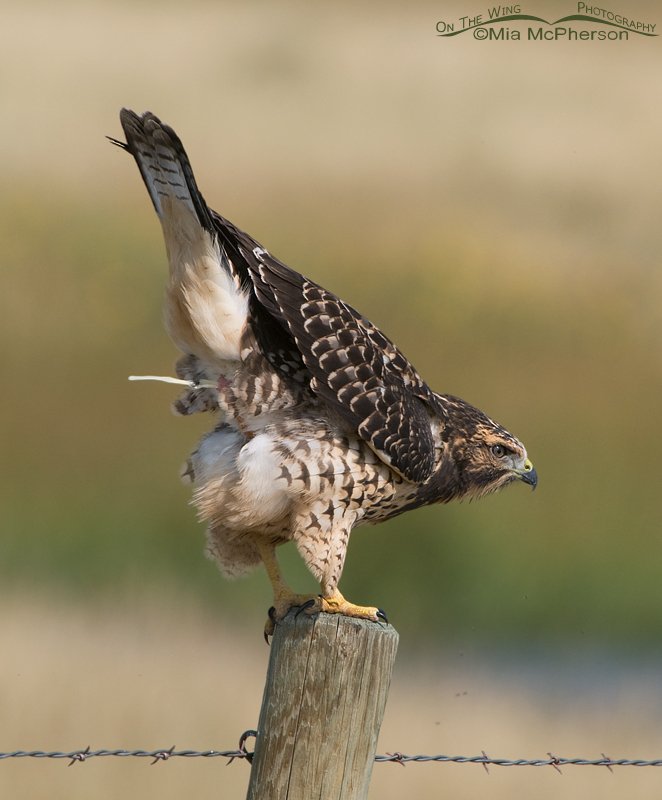 Juvenile Swainson’s Hawk, Red Rock Lakes National Wildlife Refuge
Juvenile Swainson’s Hawk, Red Rock Lakes National Wildlife Refuge
This last image pretty much sums up what I think about fracking in our National Wildlife Refuges and the oil companies who want to exploit and violate these National Treasures.
I have signed the petition, will you?
Mia
Click here to see more of my Red Rock Lakes National Wildlife Refuge photos.


Amazing what our government and the world will do in the never-ending quest for cheaper energy sources. I also signed the petition, joined that group, and posted this on my Google+ page. As an “eagleholic,” I see this and many other operations in progress that may very well wipe out the bald eagle population in American as did DDT many years ago. Did you know that fracking has been used since the 1040’s? I did not; thought it was a new method of extracting oil and gas from the ground. It is truly shameful.
I love how you used that last image to project your sentiments. I confess, at the risk of being too eclectic for existence, that I see art in the way raptor droppings careen through the air like acrylic paints.
NO FRIGGING FRACKING!!!!!!!!!!!!!!!!!!!!!!!!!!!!!!!!!!!!!!!!!!!!?!!!!!
Great photos Mia, you made your point. A lot of things do not belong in nature preserves, I am thinking here of the glacier walk in Jasper National Park. No point signing a petition since I am not an American citizen but the keystone XL pipeline that the businesses want to put through the countries(ours and yours) is stalled again.
Thanks, Mia. I’ve signed it.
signed.
Fracking is an obscenity. And, I understand, has also been associated with increased risk of earthquakes. I would like to see it banned EVERYWHERE, but starting in Wildlife Refuges is an excellent place to start. Off to see whether the petition will accept a signature from a ‘foreigner’.
I agree, I am signing all petitions!!
Well put Mia. I totally support your position on this and have signed this and many other petitions that send a conservation message to congress. It’ saw bit ironic that conservatives are usually the ones who want to exploit natural resources, like the continuing saga of the Bundy Ranch vs the BLM.
Thanks for keeping us updated on these issues on our National Wildlife Refuges Mia! Excellent job with the photos as well. I think just a visual representation of what these actions can do to our refuges should be enough to make people sit up and take action. Love the hawk’s reaction as well I signed the petition, tweeted, FB’d, liked an G+ this post!
I signed the petition, tweeted, FB’d, liked an G+ this post!
Signed and posted on Facebook. Thanks for the link. Love the signature photo.
Very well said, Mia. I agree with you totally.
Signed!